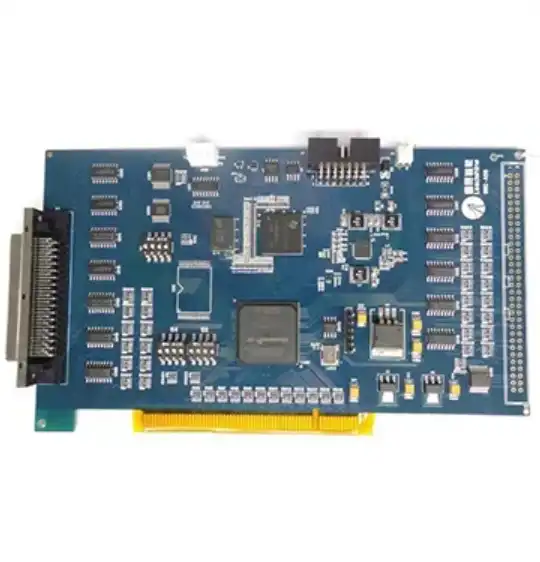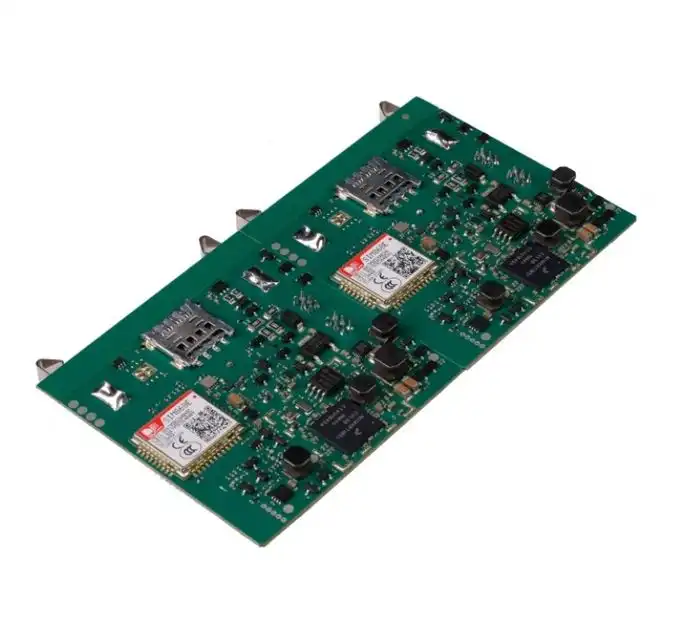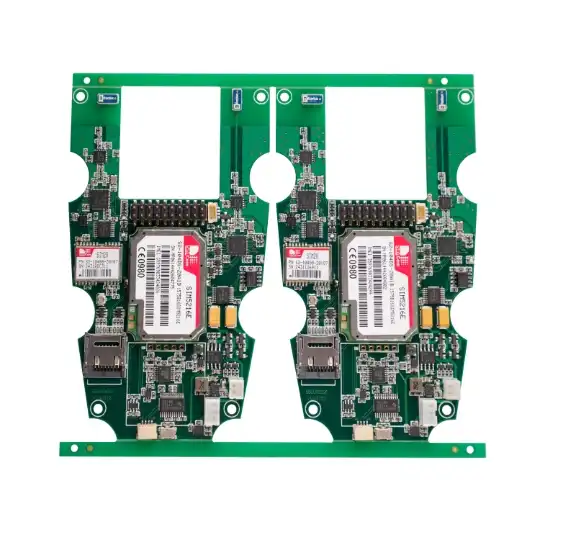Top Trends in PCBA for Automotive Electronics and Charging Systems
The automotive industry is witnessing a paradigm shift with the integration of advanced electronics and charging systems. Printed Circuit Board Assembly (PCBA) plays a pivotal role in this transformation, enabling the development of smarter, more efficient vehicles. Key trends in PCBA for automotive electronics and charging systems include the adoption of flexible and rigid-flex PCBs, miniaturization of components, implementation of advanced driver assistance systems (ADAS), and the development of high-power charging solutions for electric vehicles. These innovations are driving the automotive industry towards a more connected, autonomous, and sustainable future.

Advanced Materials and Design Techniques in Automotive PCBA
The automotive industry's demanding environment requires PCBAs that can withstand extreme conditions while delivering optimal performance. This has led to significant advancements in materials and design techniques used in automotive PCBA manufacturing.
High-Temperature Resistant Materials
Modern vehicles generate substantial heat, necessitating the use of high-temperature resistant materials in PCBA production. Polyimide and ceramic-based substrates are gaining popularity due to their ability to withstand temperatures exceeding 150°C. These materials ensure the longevity and reliability of electronic components in harsh automotive environments, reducing the risk of system failures and enhancing overall vehicle performance.
Conformal Coatings for Enhanced Protection
To shield PCBAs from moisture, dust, and chemical contaminants, manufacturers are increasingly applying conformal coatings. These thin, protective layers conform to the contours of the PCB, providing a barrier against environmental factors that could compromise the integrity of electronic systems. Advanced conformal coatings, such as nano-coatings, offer superior protection while maintaining the thermal dissipation properties of the PCBA.
3D Printing and Additive Manufacturing
The integration of 3D printing technology in PCBA manufacturing is revolutionizing the design and production process. This additive manufacturing technique allows for the creation of complex, three-dimensional circuit structures that were previously impossible or impractical to produce using traditional methods. 3D-printed PCBAs enable more efficient use of space within automotive systems, leading to lighter, more compact electronic assemblies.
Integration of Advanced Driver Assistance Systems (ADAS)
The rapid evolution of ADAS technologies is significantly impacting PCBA design and manufacturing processes in the automotive sector. These systems require sophisticated PCBAs capable of processing vast amounts of data in real-time, ensuring vehicle safety and enhancing driver experience.
High-Density Interconnect (HDI) PCBs
To accommodate the increasing complexity of ADAS components, manufacturers are turning to High-Density Interconnect (HDI) PCBs. These boards feature smaller vias and finer lines, allowing for higher component density and improved signal integrity. HDI PCBs are essential for integrating multiple ADAS functions, such as lane departure warning systems, adaptive cruise control, and collision avoidance, into a single, compact unit.
Embedded Components
The trend towards miniaturization in automotive electronics has led to the adoption of embedded component technology. By integrating passive and active components directly into the PCB substrate, manufacturers can significantly reduce the size and weight of ADAS modules. This approach not only saves space but also improves the electrical performance and reliability of the system by shortening signal paths and reducing electromagnetic interference.
Flex-Rigid PCBs for Sensor Integration
ADAS relies heavily on an array of sensors distributed throughout the vehicle. Flex-rigid PCBs offer an ideal solution for connecting these sensors to central processing units. The flexible sections of these PCBs can bend and fold to fit into tight spaces, while the rigid sections provide stability for mounting components. This hybrid design allows for more efficient routing of signals and power, reducing the overall weight and complexity of the vehicle's wiring harness.
Innovations in Electric Vehicle Charging Systems
The widespread adoption of electric vehicles (EVs) has sparked a revolution in charging system technology. PCBA manufacturers are developing innovative solutions to address the unique challenges posed by high-power charging systems and battery management.
High-Power PCBAs for Fast Charging
Fast charging capabilities are crucial for the widespread adoption of EVs. PCBAs for high-power charging systems must handle significant current loads while maintaining efficiency and safety. Manufacturers are employing thick copper layers, advanced thermal management techniques, and sophisticated power electronics to create PCBAs capable of supporting charging rates of 350 kW and beyond. These high-power PCBAs enable EVs to charge rapidly, reducing downtime and enhancing the practicality of electric transportation.
Intelligent Battery Management Systems
Advanced battery management systems (BMS) are essential for optimizing the performance and longevity of EV batteries. PCBAs for BMS incorporate sophisticated monitoring and control circuits to regulate charging, balance cell voltages, and ensure safe operation. The integration of artificial intelligence and machine learning algorithms into BMS PCBAs allows for predictive maintenance and adaptive charging strategies, further extending battery life and improving overall vehicle efficiency.
Wireless Charging PCBAs
The development of wireless charging technology for EVs represents a significant trend in PCBA design. These systems require specialized PCBAs capable of efficiently transmitting and receiving power through electromagnetic induction or resonance. Manufacturers are focusing on creating compact, high-efficiency PCBAs that can withstand the rigors of outdoor installation while delivering consistent charging performance. As wireless charging infrastructure expands, the demand for these specialized PCBAs is expected to grow substantially.
Conclusion
The automotive industry is undergoing a profound transformation, driven by advancements in electronics and electrification. PCBA manufacturers are at the forefront of this revolution, developing innovative solutions that enable the integration of advanced driver assistance systems, support high-power EV charging, and enhance overall vehicle performance. As we move towards a future of autonomous and electric vehicles, the role of PCBA in automotive electronics and charging systems will continue to expand, presenting exciting opportunities for innovation and growth in the sector.
FAQ
Q: What are the key challenges in PCBA design for automotive applications?
A: The main challenges include designing for harsh environments, ensuring reliability under extreme temperatures, managing electromagnetic interference, and meeting stringent safety standards.
Q: How does PCBA contribute to the development of autonomous vehicles?
A: PCBA enables the integration of complex sensor systems, provides the processing power for AI algorithms, and supports the high-speed data communication necessary for autonomous driving capabilities.
Q: What innovations are driving the future of EV charging PCBAs?
A: Key innovations include high-power designs for fast charging, intelligent battery management systems, and wireless charging technologies that improve convenience and efficiency.
Partner with Ring PCB for Your Automotive PCBA Needs | Ring PCB
Ring PCB stands at the forefront of PCBA innovation for the automotive industry. With our cutting-edge manufacturing facilities and team of over 500 professionals, we deliver top-tier PCBA solutions tailored to the exacting standards of automotive electronics and charging systems. Our commitment to quality, evidenced by our ISO certifications, ensures that every PCBA we produce meets the highest industry standards. Whether you need high-density interconnect PCBs for ADAS or robust PCBAs for EV charging stations, Ring PCB has the expertise to bring your automotive projects to life. Contact us at [email protected] to explore how our comprehensive PCBA services can accelerate your automotive innovations.
References
1. Johnson, M. (2023). "Advanced Materials in Automotive PCB Assembly: A Comprehensive Review." Journal of Automotive Electronics, 18(2), 145-160.
2. Smith, A., & Brown, B. (2022). "Integration Challenges of ADAS in Modern Vehicle Architectures." IEEE Transactions on Vehicular Technology, 71(5), 4789-4801.
3. Lee, S., et al. (2023). "High-Power PCB Design for Electric Vehicle Fast Charging Systems." International Journal of Power Electronics, 14(3), 302-315.
4. Zhang, Y., & Wilson, D. (2022). "Trends in Flexible and Rigid-Flex PCBs for Automotive Applications." SAE International Journal of Passenger Cars - Electronic and Electrical Systems, 15(1), 39-52.
5. Patel, R. (2023). "Wireless Charging PCB Designs for Next-Generation Electric Vehicles." IEEE Electrification Magazine, 11(2), 22-31.

Welcome to Ring PCB! Share your inquiry, and receive a tailored quotation!

Ring PCB, your trusted partner for PCB & PCBA Full Turnkey Solutions



